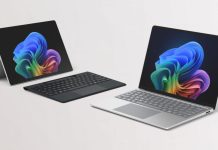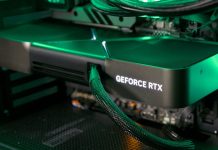
Data travels so quickly that you can download 15 hours of high-quality video in a mere second. For some businesses, this literally translates into being able to print money from algorithms.
Recently, Quantum Corridor, a company built by Chicago-area technology innovators, said that it was able to transmit information 1,000 times faster than traditional networks, paving the way for advancements in defense, cybersecurity, and machine learning.
The first transmission achieved a latency of 0.266 milliseconds of information exchange over its current 12-mile network. That’s 500 times faster than the blink of an eye. Soon, the network will stretch for over 260 miles.
While Quantum Corridor is the first network in North America to achieve a capacity of 40 terabits per second (Tbps), the fastest internet speed ever recorded was achieved by Japanese engineers at 319 Tbps.
Not only does the information travel fast, but it’s also allegedly secure from adversaries. I sat down with Ryan Lafler, president and CTO of Quantum Corridor, to learn more about quantum transmission.
With quantum transmission, the Department of Defense would be able to share information without foreign agents intercepting it. Talk to me about the security of these quantum transmission networks.
Imagine if you had a vehicle on a highway and you had barricades on both sides. It’s very similar to that concept. In addition, part of the TAA compliance is that we have a North American-manufactured origin point for all of our electronics [all components are manufactured in the TAA-compliant countries, the US, Canada, and Mexico in this particular case.] It’s America’s way of ensuring that there’s no backdoor software in the electronics we’re using that could potentially compromise our national security. There’s no possibility of interception.
What are some other methods of application in real life? Previously, you mentioned breakthroughs in biotech research and machine learning, among other areas.
Envision different quantum computers at research facilities across our corridor. They’re all doing independent research. The transfer of information is much quicker. What the quantum corridor will allow us to do is connect all these research institutions along the corridor together so that the data sharing can be significant.
What would normally take hours to transmit – data on climate, financial modeling, AI, machine learning, energy efficiency, and gene sequencing, to name just a few – can be shared nearly instantaneously across the corridor. Researchers don’t have to pause.
Right. So, at this point, we’re trying to download 500GB of data. We know that it’ll take until tomorrow to finish the task. If we were connected to that superhighway, could we have that information instantaneously and then share it back at the same speed?
If you think about the distance from your TV to your cable box, most people have like a three-foot cable that connects both of these things together. With the 12-mile corridor that we’ve built, we’re able to send transmissions that move faster than that three-foot cable from the TV to their cable box.
If you think about what difference that makes… Even with the speeds that we saw, the speed increases during the dot com boom. There was a 56k model, the DSL, the cable, and now – the fiber. This is literally going to be the next generation of that technology.
How will those institutions benefit from the fast and vast transmission of data?
A real-world example that I love to give is that we can transfer 1 million photo files, or the equivalent of 15 hours of high-quality video, in just one second. If you think about the research institutions out there, whether it’s climate simulation and modeling, or financial modeling, the transition for knowledge is a lot quicker. Researchers are brought up to speed on years of work in mere seconds. Another example that I love to give is the capability of our transmissions to send the entire Library of Congress every two seconds.
So it’s mostly for research purposes at this point?
It is both for the public and private sector. We’re enabling quantum transmission. We’re also trying to appeal to the private sector. So that includes all the hyperscaler companies that are looking for chip development along the Quantum Corridor that may have an interest in taking advantage of this tech arms race.
A lot of the chip manufacturers are trying to get a leg-up on their competition. Not only are they trying to be the first ones to crack the code to quantum computing, but in addition, they’re trying to master quantum communications as well. This is literally going to be the next dot com boom of our time. And so there’s interest all over this. We want to enable both the private sector and public sector along the quantum corridor.




